|
Winchester Single Bevel Follower Arm

Winchester used a single bevel follower arm thoughout their production. They can be finished "in the white",
black parkerized or green parkerized. Some early parts are even blued. The parkerized parts were used later in
production, most likely after 1943. You can tell the Winchester single bevel from a Springfield by the size of the bevel.
Winchester's bevel is very large compared to Springfield's. Springfield's bevel just takes the corner off, Winchester
takes off half the top side.
Winchester Large Pad Trigger Housing With Cloverleaf Hole

Winchester large pad trigger housings with the cloverleaf hole. These housings were used after May 1943.
| Winchester Milled Bullet Guide |
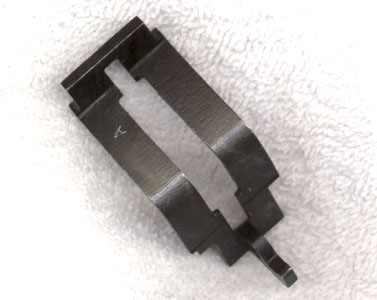
|
| This A marked bullet guide was used late production. |
Winchester used milled bullet guides throughout their production.
Milled Guides with a wide slot marked 8 were used on late WIN-13's.
Milled Guides with a wide slot marked A were used on Winchester's made from 1943 to 1945. Most
WIN-13's have these.
Milled Guides with a wide slot marked CM were used during 1942
production.
Milled Guides with a wide slot and punch marked were used from
s/n 1,218,000 to end of production.
Milled Guides with a narrow slot and punch marked were used from
s/n 125,000 to 1,218,000.
Milled Guides with a narrow slot and marked B8875W.R.A. were
used from s/n 101,000 to 126,000.
Milled Guides with a narrow slot and marked B-8875 and punch
marked were mixed used on the first Winchester M1's with the
B8875W.R.A. guides.
| Winchester narrow slot bullet guide |
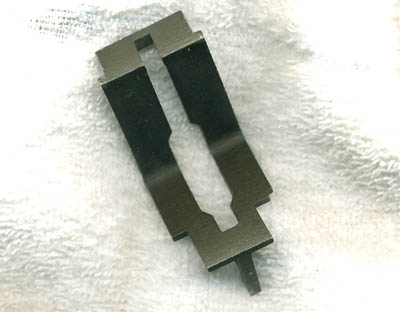
|
Winchester narrow slot milled bullet guide without drawing numbers were used from s/n 126,xxx to 1,218,xxx.
| Winchester A marked clip latch |
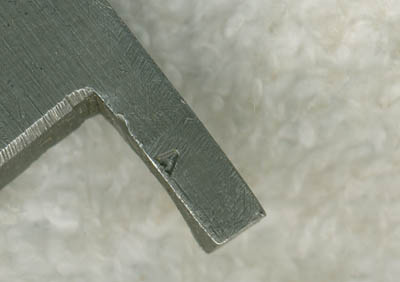
|
Winchester used the round front clip latch throughout their production. The early ones were punch marked
on the back by the spring hole. Some are punch marked on the flat side. Once again during the 1942 production
the CM marked latches were used. The earlier CM marks were large and visible on the outside of the leg. Later
ones had a smaller cm. During late production the latches were A marked with a very small A visible on the outside of
the leg. These are very common on the 2 million serial numbered rifles and some WIN-13 production.
| Winchester clip latch small cm mark |

|
| Winchester bolt no step |

|
Winchester bolts were marked D28287-1W.R.A. on the front. The early bolts didn't have the hole on the inside
middle. It is believed this hole was added to allow any water that might get in the firing pin chamber to drain.
| Late Winchester bolt |
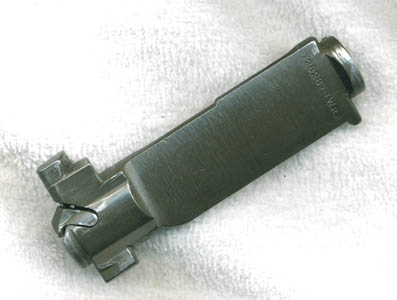
|
The late production Winchester bolts had a step added to the op rod lug. These were used late WIN-13
production.
| Late Winchester bolt lug |
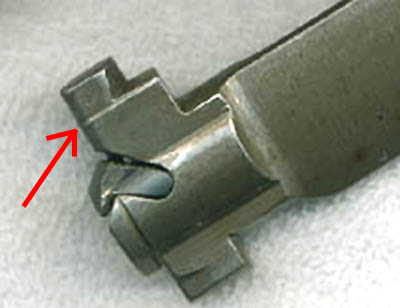
|
|

